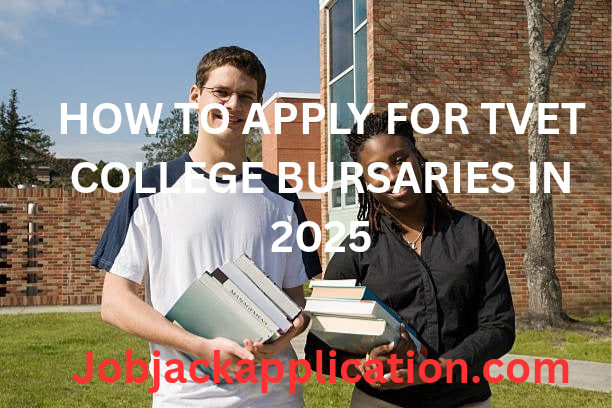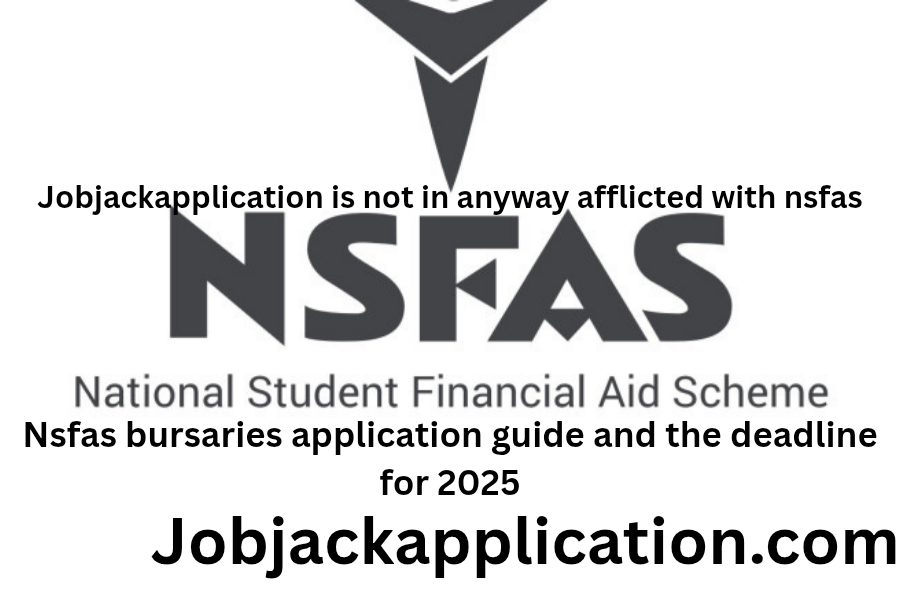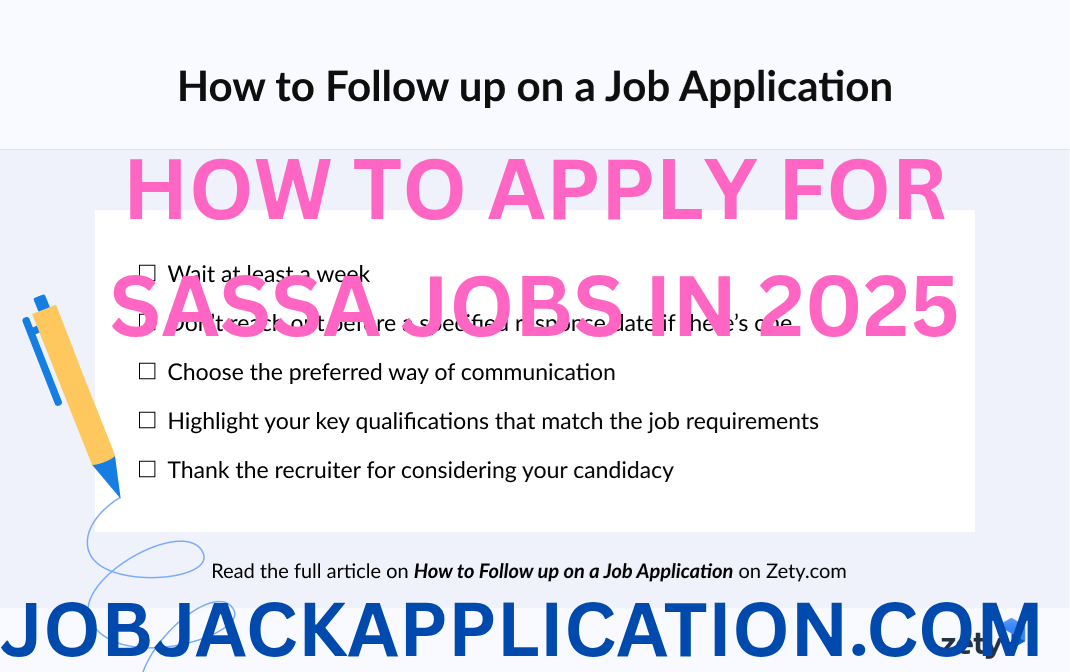How to apply for TVET bursaries in 2025.
If you’re serious about building real, job-ready skills without drowning in debt, TVET (Technical and Vocational Education and Training) is one of the smartest paths you can choose. TVET focuses on practical, career-linked programs—from engineering and ICT to hospitality, healthcare, business, and trades—so you can move from classroom to paycheck faster. UNESCO defines TVET broadly as education and skills development across a wide range of occupational fields; in other words, it’s training designed for real work, real industries, and real careers. (unevoc.unesco.org)
This definitive guide walks you through how to apply for TVET bursaries in 2025 step by step. You’ll learn what counts as a TVET bursary, who qualifies, what documents to prepare, how deadlines work, and where to find legitimate funds in South Africa, the United Kingdom, Canada, and the United States. Throughout, I’ll link to the official pages you’ll actually use when you apply.
What Exactly Is a TVET Bursary?
A TVET bursary is funding that helps you pay for a technical or vocational program—often covering tuition, registration, textbooks, transport, accommodation, or learning materials. Some countries call this support a bursary, others call it grants, scholarships, or financial aid—but the idea is similar: non-repayable support (or mostly non-repayable) intended to make skills training affordable.
- South Africa (SA): The most common funding route is the DHET Bursary Scheme administered by NSFAS for public TVET colleges. Eligibility typically includes household income thresholds and studying an approved program at a public TVET college. (NSFAS, NSFAS)
- United Kingdom (UK): Further education colleges use the 16 to 19 Bursary Fund and other discretionary schemes to support students. Age and residency rules apply, and institutions manage the funds. (gov.uk)
- Canada: You’ll mainly use Canada Student Grants (through your province/territory), which include sizable non-repayable amounts for full-time and part-time students through the federal program. (canada.ca)
- United States (US): While the term “bursary” isn’t common, the equivalent is need-based grants (like the Federal Pell Grant), work-study, and state or institutional awards. There are also targeted Career & Technical Education (CTE) supports. (studentaid.gov, U.S. Department of Education)
Bottom line: “Bursary” might be called “grant” in some countries, but the process you’ll follow below still works—just plug in the country-specific links and rules for your situation.
Quick Navigation
- Step-by-Step: How to apply for TVET bursaries in 2025
- Country-by-Country Essentials (SA, UK, Canada, US)
- Documents Checklist
- Timeline & Deadlines
- Common Mistakes (and easy fixes)
- FAQs: How to apply for TVET bursaries in 2025
- Free Templates: Motivational letter + CV bullet starters
- Final Word
Step-by-Step: How to apply for TVET bursaries in 2025
Use these nine proven steps as your blueprint. They’re written to be universal—then we’ll add country-specific details.
1) Map your goal (15 minutes)
Before clicking any apply button, clarify:
- What program (NCV, NATED/Report 191, apprenticeship, diploma, certificate)?
- Start date and campus?
- Your career target (e.g., junior network technician, welding artisan, pastry chef).
Having a crisp goal helps you choose the right funding stream, because many bursaries are program-linked.
Tip: Look up your local TVET system overview to confirm how programs are structured. In South Africa, for example, TVET colleges sit under the Department of Higher Education & Training. (Western Cape Government, dhet.gov.za)
2) Identify official funders and portals (20 minutes)
Go straight to authoritative sources to avoid scams:
- SA: NSFAS (DHET TVET bursary) and your public TVET college bursary office. (NSFAS, NSFAS)
- UK: Your FE college’s student support page and the 16–19 Bursary Fund guidance. (gov.uk)
- Canada: The federal Canada Student Grants portal; you’ll apply via your province or territory. (canada.ca)
- US: Federal Student Aid (studentaid.gov) and state/community college aid pages; check CTE-linked funds. (studentaid.gov, U.S. Department of Education)
Bookmark the exact pages for 2025—eligibility and amounts can change each academic year.
3) Check eligibility (25 minutes)
Confirm eligibility before you fill in anything. Key criteria usually include citizenship/residency, program type, registration status, age (UK bursary), and income thresholds.
- SA: The DHET bursary (via NSFAS) is for South African citizens studying at public TVET colleges, typically with a household income up to R350,000 per year. (Always confirm the latest NSFAS eligibility criteria.) (NSFAS)
- UK (16–19 Bursary Fund 2025–26): You must be 16 or over but under 19 on 31 August 2025 (with specific exceptions for 19+ continuers or those with an EHC plan). (gov.uk)
- Canada (Full-Time Grant): Until the end of the 2025–26 school year, eligible full-time students can receive up to CA\$4,200 per year (or CA\$525 per month), with application through your province/territory. (canada.ca)
- US: Check your FAFSA-based eligibility for grants like the Pell Grant, plus any state or college-specific vocational/CTE funding. (studentaid.gov, U.S. Department of Education)
4) Gather documents (30–60 minutes)
Get these ready so you can apply in one sitting (see Documents Checklist for detail):
- ID/passport, proof of residency/citizenship
- Academic records (latest results/transcripts)
- Proof of income (for you/parents/guardians), or affidavits if applicable
- Acceptance/conditional acceptance from a public TVET/FE/community college
- Banking details (some schemes pay allowances to you)
- Disability/supporting documents if relevant
- A short motivation letter (why this program, your goals, impact)
5) Create your funder profile (10–20 minutes)
- SA: Create/update your myNSFAS profile; some TVET bursary offices can assist in person (“walk-in assistive capture”) during designated windows. (NSFAS)
- UK: Your college will guide you to the correct bursary application form/process per its policy under the 16–19 guidance. (gov.uk)
- Canada: Start from the federal page and follow the link to your province/territory portal to apply. (canada.ca)
- US: Complete the FAFSA early, then apply for college/state programs; check the Department of Education’s community college and CTE resources for extras. (studentaid.gov, U.S. Department of Education)
6) Complete the application carefully (30–90 minutes)
- Enter names and ID numbers exactly as they appear on your documents.
- Double-check program codes (e.g., NCV/NATED streams in SA) and study load (full-time or part-time).
- Upload clear scans (PDF/JPEG).
- Write a brief, authentic motivation: why this field, your outcomes, and how financial support closes the gap.
7) Submit before the deadline—and keep proof (5 minutes)
Save the confirmation email/SMS and a PDF of your application. If the system provides a reference number, store it in your phone and a notebook.
In SA, NSFAS timelines can differ for TVET semesters/terms (e.g., trimester 2/3 per DHET calendar). Always verify the current year’s window on the official site. (NSFAS)
8) Track status and respond fast (5–10 minutes weekly)
- Log in weekly to check updates and requests for missing documents.
- If you’re asked to correct or upload something, do it within 24–48 hours.
9) Register correctly to activate your funding
Most bursaries are tied to registration at an eligible institution and the final confirmation of your study load and modules. Don’t skip enrollment steps or you might delay payment of allowances or fee coverage.
Country-by-Country Essentials
South Africa: NSFAS (DHET Bursary) for TVET Colleges
What it is: The DHET Bursary Scheme, administered by NSFAS, supports eligible students at public TVET colleges and public universities. For TVET, it can cover tuition, registration, and certain allowances (as determined each year). (NSFAS)
Who qualifies (summary):
- South African citizens
- Accepted/registered for an approved program at a public TVET college
- Within income thresholds (commonly up to R350,000 combined household income p.a.—verify each year) (NSFAS)
Where to apply:
- NSFAS official site and your TVET college’s bursary/financial aid office; many colleges actively help students submit applications. (NSFAS, NSFAS)
When to apply (2025 context):
- TVET bursary cycles may be tied to the trimester/semester calendar (e.g., trims 2 & 3 in May/September as per DHET calendar). Always check the NSFAS announcements page for the current year’s window, as dates can open or close at different times. (NSFAS)
Policy/eligibility documents:
- NSFAS Eligibility Criteria & Conditions for Financial Aid (2025) (PDF) – the official rules for funding. (NSFAS)
Pro tip (SA): Apply early, and work with your college bursary office to ensure your course code and registration status match your NSFAS application. Small misalignments (wrong program or campus) are a common reason for delays.
United Kingdom: 16–19 Bursary Fund & College Support
What it is: The UK supports learners at FE colleges (including technical and vocational programs) via the 16 to 19 Bursary Fund. Colleges distribute funds based on national guidance. (gov.uk)
Key eligibility (2025–26):
- A student must be 16 or over but under 19 on 31 August 2025 (with limited exceptions for 19+ continuers or those with an EHC plan). (gov.uk)
Where to apply:
- Through your college (each institution administers bursaries and sets evidence requirements based on the national guidance). (gov.uk)
What you may receive:
- Help with travel, meals, equipment, and other study costs depending on circumstances and college policy under the national rules. Check your college’s student finance page for exact details.
Pro tip (UK): Get your proof of income (e.g., benefits statements) ready early and keep digital copies. Colleges often process bursaries on a first-come, first-served basis within their budgets.
Canada: Canada Student Grants (via Provinces/Territories)
What it is: The Canada Student Financial Assistance Program offers grants and loans—with significant non-repayable grant amounts—delivered through provinces and territories. (canada.ca)
Current headline amount (as of 2025):
- Full-Time Students: Up to CA\$4,200 per year (or CA\$525 per month of study) until the end of the 2025–26 school year. Amounts and eligibility can vary, and more grants exist (e.g., for dependants, disabilities). (canada.ca)
Where to apply:
- Start at the federal portal (Canada.ca) and click through to your province/territory. The online application routes you to the right portal. (canada.ca)
Pro tip (Canada): If you’re pursuing a vocational diploma or certificate at a public college or a designated private institution, look for institutional bursaries on top of federal/provincial grants—many colleges add book/tool allowances for trades students.
United States: Grants, FAFSA & CTE-Linked Support
What it is: US students fund TVET-type programs through a mix of federal grants (e.g., Pell), work-study, state aid, and college scholarships. Technical and career programs at community colleges are often eligible; confirm your program’s accreditation and aid status. (studentaid.gov)
Where to start:
- Complete the FAFSA as early as possible to unlock federal and many state/institutional funds. Then check your community college and state higher education pages. For CTE resources and targeted grants, consult the US Department of Education’s community college & CTE information hub. (U.S. Department of Education)
Policy climate note: Discussions about how the US funds career training—especially at community colleges—are active and can affect aid structures. Always check the current year’s rules and deadlines. (statesman.com, Business Insider)
Pro tip (US): Many employers offer tuition reimbursement for technical certificates that align with their workforce needs. Combine employer funding with Pell/state grants to keep your out-of-pocket low.
Documents Checklist
Here’s a universal checklist you can adapt to your country/institution:
- Identity & status
- National ID/passport
- Proof of citizenship/residency (where required)
- Study permit (if international, where applicable)
- Academic
- Latest school results or transcripts
- Acceptance letter or proof of registration/conditional offer
- Program code/course details (make sure this matches on every form)
- Financial
- Proof of household income (pay slips, tax certificates, social grant/benefit statements)
- Affidavits where income proof isn’t available
- Banking details (if allowances are paid to you)
- Supporting circumstances
- Disability documentation (for disability support grants)
- Proof of guardianship or special circumstances (where relevant)
- Motivation
- A concise motivation letter connecting your program choice to your career goals and demonstrating need. (Template below.)
SA specifics: Always review the NSFAS Eligibility Criteria & Conditions document for the current academic year—requirements and definitions are precise. (NSFAS)
Timeline & Deadlines
The safest way to handle how to apply for TVET bursaries in 2025 is to work backwards from your program start date:
T-6 months (Research & shortlist):
- Confirm your program and shortlisted colleges.
- Bookmark official funder pages (NSFAS, college bursary, provincial portals, FAFSA, etc.).
T-4 to T-5 months (Eligibility & documents):
- Check the current year’s eligibility rules and income thresholds.
- Gather certified/clear copies of required documents.
T-3 months (Open your application profile):
- Create/update your myNSFAS (SA), start your FAFSA (US), open your provincial portal (Canada), or college bursary form (UK).
- Pre-fill all static info; save drafts where possible.
T-2 months (Submit early):
- Submit once the window opens—many schemes process on a rolling basis.
- Keep your reference number and export a PDF of your submission.
T-1 month (Follow-ups):
- Respond to requests for additional documents within 24–48 hours.
- Confirm your registration/enrolment steps so funding can be activated.
Start date (Activate):
- Ensure your enrolment status and program load in the college system match your bursary/aid application.
- Verify your fee statement and allowances schedule with the bursary/aid office.
SA note: TVET cycles can include trimester/semester windows (e.g., Trimester 2 & 3 aligned to DHET’s calendar). NSFAS posts updates for each intake—confirm the current year’s open/close dates and announcements on the official site. (NSFAS)
Common Mistakes (and easy fixes)
- Using unofficial websites
Fix: Only apply via official portals (NSFAS, GOV.UK guidance/college, Canada.ca provincial portals, FAFSA). I’ve linked them for you above. (NSFAS, gov.uk, canada.ca, studentaid.gov) - Missing the eligibility fine print
Fix: Check age ranges (UK), income thresholds (SA), program accreditation (US/Canada), and study load (full-time vs part-time). (gov.uk, NSFAS, canada.ca) - Uploading unreadable documents
Fix: Use high-quality scans; name files clearly (e.g.,ID_SamKhumalo.pdf,Income_Father_June2025.pdf). - Mismatched program details
Fix: Ensure your course code, campus, and start date match across the application, acceptance letter, and registration. - Late submissions
Fix: Apply on day 1 of the window if possible; set phone reminders for all milestones. - Weak motivation letter
Fix: Use the template below—keep it honest, specific, and forward-looking. - Not tracking status
Fix: Log in weekly; some systems won’t email you every change.
FAQs: How to apply for TVET bursaries in 2025
1) What does “TVET” cover, exactly?
TVET includes technical and vocational education for many career fields—manufacturing, ICT, construction, hospitality, health, business, and more. It blends theory with hands-on skill development for the workplace. (unevoc.unesco.org)
2) Is a TVET bursary the same as a scholarship or grant?
Terminology varies by country. In SA/UK you’ll hear “bursary”; in Canada/US, “grant” is common. All are financial aid you don’t typically repay (though rules vary). (canada.ca, studentaid.gov)
3) Do I need a confirmed college place first?
Usually you need acceptance or conditional acceptance to a qualifying program, or you must register to activate the award—check your funder’s rulebook (e.g., NSFAS guidelines, UK college policy, provincial portals, FAFSA). (NSFAS, gov.uk, canada.ca, studentaid.gov)
4) How much can I get?
- SA: Coverage is set annually; check NSFAS/DHET guidance for TVET (tuition/registration plus specified allowances). (NSFAS)
- UK: Bursaries are college-administered under national rules; amounts vary by need and policy. (gov.uk)
- Canada: As of 2025, full-time grants can be up to CA\$4,200 per year (CA\$525/month) through 2025–26. (canada.ca)
- US: Pell and other grants depend on FAFSA results, enrollment intensity, and program. (studentaid.gov)
5) When do 2025 applications open and close?
Windows vary by country and by institution. NSFAS, for instance, may have semester/trimester specific TVET windows each year; UK colleges follow the 2025–26 academic cycle; Canada’s cycle runs August–July; US aid follows FAFSA and institutional timelines. Always verify the current, official date ranges. (NSFAS, gov.uk, canada.ca)
6) Can international students apply?
Some bursaries are strictly for citizens/permanent residents (e.g., SA’s DHET bursary). Others (college/institutional) may allow international applicants with different funding structures. Confirm with your college’s financial aid team. (NSFAS)
7) What if my parents can’t provide income proof?
Most schemes accept affidavits or alternative documents. Ask your college bursary office or check the official guidelines for acceptable substitutes. (NSFAS)
8) How do allowances (transport, meals, accommodation) work?
Allowances differ by country, college, and year. In SA, for example, the structure is set in NSFAS/DHET guidance; in the UK, colleges set support types within national rules; in Canada and the US, grant funds are often combined with institutional aid. Always read the current policy page for your institution. (NSFAS, gov.uk)
Free Templates
A) Motivation Letter (copy/paste and personalize)
Subject: Bursary Application – [Your Full Name], [Program], [College]
Dear [Bursary Committee/Financial Aid Office],
I am applying for financial support for the [Program name] at [College/Campus], starting [Month Year]. I chose this program because [state your reason: passion, experience, community need, labor market demand].
My goal is to qualify as a [target role] within the next [timeframe]. This bursary will enable me to focus on my studies by covering [tuition/transport/materials], which I cannot currently afford due to [brief financial situation].
I have [relevant achievements: school projects, part-time work, community service], and I am committed to achieving [outcome, e.g., high grades, certification] and giving back by [mentoring, volunteering, community workshop, etc.]
Thank you for considering my application. I will gladly provide any additional information.
Sincerely,
[Full Name]
[ID/Student number]
[Phone | Email]
B) CV Bullet Starters (for a no-fluff skills profile)
- Assembled and calibrated [equipment/tool], completing [task] with [accuracy/time metric].
- Assisted [number] customers per day, resolving [common issue] and maintaining [satisfaction metric].
- Completed [training module/short course] in [topic], applying it to [practical project].
- Implemented a 5S (Sort, Set in order, Shine, Standardize, Sustain) corner in the workshop, improving [metric].
On-Page SEO Checklist (already applied to this article)
- Primary keyword placement: Title, H1, meta title, first 100 words, at least one H2/H3, image alt suggestions, conclusion.
- Keyword density: Naturally around ~1% without stuffing (varies with your edits).
- Synonyms/LSI phrases: TVET bursary requirements 2025; TVET college funding; NSFAS TVET; FE bursary; Canada student grants; FAFSA grants; CTE.
- Short paragraphs & skimmable subheads for readability.
- Internal link ideas:
- “Best TVET courses with high employability”
- “How to write a winning bursary motivation”
- “Interview tips for first apprenticeships”
- External links (authoritative): NSFAS/DHET, GOV.UK 16–19, Canada Student Grants, US Department of Education. (Cited below.)
Suggested Images & Alt Text (royalty-free stock or your own photos)
- Image: Student in a workshop with safety gear
- Alt: “TVET student practicing hands-on skills in 2025 training workshop”
- Image: Close-up of application documents and laptop
- Alt: “How to apply for TVET bursaries in 2025 – documents and online forms”
- Image: College campus welcome desk
- Alt: “TVET college bursary office helping students with 2025 applications”
- Image: Bus/train commute to campus
- Alt: “Transport allowance support for TVET bursary students in 2025”
Micro-Checklists (Print-and-Go)
“10-Minute Pre-Apply Check”
- I meet the citizenship/residency rule.
- My program is eligible and at a qualifying college.
- I know the deadline and window.
- My documents are ready, clear, and correctly named.
- I have a short motivation drafted.
“Submission Day”
- Login created (myNSFAS/college/FAFSA/provincial portal).
- Forms completed with matching details (name, ID, program code).
- All uploads attached; previewed for readability.
- Submitted and confirmation saved.
- Calendar reminder set for status checks.
“After Approval”
- Register for the correct program modules.
- Confirm fee statement shows bursary/aid.
- Understand allowance schedule (if any).
- Keep in touch with bursary office for changes (address, bank, modules).
Credible Sources & Official References
- UNESCO-UNEVOC TVET definition – global framing of TVET scope. (unevoc.unesco.org)
- South Africa (NSFAS / DHET TVET bursaries):
- DHET Bursary Scheme (NSFAS). (NSFAS)
- TVET College Funding (NSFAS): income threshold guidance; TVET bursary offices; trimester notes. (NSFAS, NSFAS)
- NSFAS Eligibility Criteria & Conditions 2025 (PDFs). (NSFAS)
- DHET & TVET system overview pages. (Western Cape Government, dhet.gov.za)
- United Kingdom:
- 16 to 19 Bursary Fund guide 2025–26 (age criteria and administration). (gov.uk)
- Core guidance hub for institutions. (gov.uk)
- Canada:
- Canada Student Financial Assistance – grants & loans. (canada.ca)
- Canada Student Grant for Full-Time Students (2025 amounts and dates). (canada.ca)
- United States:
- Federal Student Aid (types of aid). (studentaid.gov)
- US Dept. of Ed – Community College & CTE programs. (U.S. Department of Education)
- Contextual news on policy climate (US): Pell and CTE discussions that can affect aid. (statesman.com, Business Insider)
Putting It All Together (Example Walkthrough)
Imagine Nomsa in South Africa, Liam in the UK, Asha in Canada, and Miguel in the US—all starting in January–September 2025:
- Nomsa (SA): Chooses an NCV: Electrical Infrastructure Construction program at a public TVET college. She checks NSFAS rules (R350k threshold), creates myNSFAS, confirms the trimester cycle dates, and submits early with help from the college bursary office. Funding is activated after she registers in the correct modules. (NSFAS, NSFAS)
- Liam (UK): Is 17 on 31 August 2025, so he qualifies for the 16–19 Bursary Fund. He applies through his college with proof of household income, gets help for travel and tools, and renews his bursary each academic year per college policy. (gov.uk)
- Asha (Canada): Starts a two-year IT Networking diploma. Through the federal portal, she’s routed to her provincial site and secures the Canada Student Grant (eligible for up to CA\$4,200 in 2025–26). She stacks this with a small institutional bursary. (canada.ca)
- Miguel (US): Completes the FAFSA early for a community college HVAC program; he qualifies for Pell and grabs a campus work-study role. He also checks the state workforce site for a CTE tool allowance program. (studentaid.gov, U.S. Department of Education)
Final Word
If you’ve read this far, you already know the secret: start early, use official portals, and keep your details consistent. That’s the heart of how to apply for TVET bursaries in 2025—no hacks, just a smart, repeatable process that works across countries.
Whether you’re in South Africa applying through NSFAS, in the UK using your college’s 16–19 bursary process, in Canada tapping into federal/provincial grants, or in the US unlocking aid via FAFSA and CTE resources, the playbook is the same: Get eligible, get organized, and get in early.
Your next action (5 minutes):
- Bookmark your country’s official page from the list above.
- Open a notes doc called “TVET Bursary 2025” and paste the checklist and template.
- Set three calendar reminders: Research, Submit, and Follow-up.
You’ve got this. The skills you’ll gain—and the career you’ll build—are worth the effort.








Leave a Reply